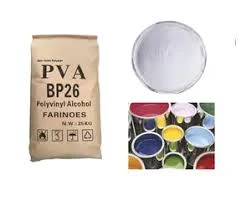Building Coating Adhesive with Hydroxypropyl Methylcellulose (HPMC)
In the realm of construction and building materials, the significance of adhesives cannot be overstated. Among various adhesive technologies, Hydroxypropyl Methylcellulose (HPMC) has emerged as a prominent ingredient in building coating formulations. This article explores the role of HPMC in building coating adhesives, detailing its properties, benefits, and applications.
What is Hydroxypropyl Methylcellulose (HPMC)?
Hydroxypropyl Methylcellulose is a cellulose derivative that is widely used as a thickening, binding, and film-forming agent. Due to its unique chemical structure, HPMC exhibits excellent solubility in water, forming transparent gels and dispersions when mixed into aqueous solutions. This characteristic allows for a smooth application and excellent workability, making it an essential component in various building products.
Properties of HPMC
1. Water Retention One of the key properties of HPMC is its water-retention capability. It helps to maintain moisture levels in building coatings, which is critical during the curing process. This feature prevents rapid drying and allows for better adhesion and binding of the coating to substrates.
2. Thickening Agent HPMC acts as an effective thickener, influencing the rheological properties of adhesives. By adjusting the viscosity, manufacturers can control the flow and application characteristics of the coating. This is particularly important for achieving the desired finish and ensuring ease of use.
3. Compatibility HPMC is compatible with a wide range of polymers and additives, allowing formulators to tailor properties according to specific requirements. This versatility enables the creation of customized formulations that meet various performance standards in the construction industry.
4. Film Formation Upon drying, HPMC creates a flexible yet durable film on the surface. This film enhances the adhesion properties of the coatings and provides resistance to mechanical stresses, chemicals, and environmental factors.
Benefits of Using HPMC in Building Coating Adhesives
The incorporation of HPMC into building coating adhesives offers several advantages
- Improved Workability HPMC enhances the ease of application, allowing for consistent thickness and coverage
. This results in reduced labor time and costs, thus benefiting contractors and builders.building coating adhesive hpmc

- Enhanced Adhesion With excellent water retention and film-forming capabilities, HPMC contributes to the overall adhesive strength of the coating. This ensures better bonding with a variety of substrates, including concrete, plaster, and brick.
- Environmental Resistance HPMC-modified coatings exhibit improved resistance to water, mold, and fungi. This is particularly vital in areas with high humidity or extreme weather conditions, as it helps maintain the integrity of the building materials over time.
- Reduced Splatter and Drips The thickening properties of HPMC minimize splatter during application and reduce drips, resulting in cleaner work and a more professional finish.
Applications in Building Coatings
HPMC is utilized in various building coating applications, including
- Tile Adhesives In tile installation, HPMC enhances the grip of the adhesive, ensuring tiles remain securely in place even in high-moisture environments.
- Interior and Exterior Paints It is often included in formulations for interior and exterior paints to improve viscosity, ease of application, and overall performance.
- Mortars and Plasters HPMC is a crucial additive in dry-mixed mortars and plasters, where it enhances water retention for extended workability.
- Texture Coatings In texture coatings, HPMC aids in creating various surface textures while maintaining good adhesion and durability.
Conclusion
Hydroxypropyl Methylcellulose (HPMC) is an invaluable ingredient in building coating adhesives. Its unique properties, such as water retention, thickening ability, and film-forming characteristics, not only enhance the performance of adhesives but also contribute to the sustainability of construction practices. As the industry continues to innovate, the role of HPMC in building materials will undoubtedly expand, promoting better results and more efficient building processes. Whether it is for a commercial building or residential project, HPMC-based adhesives represent the future of construction materials.
-
A Comprehensive Guide to Methyl Ethyl Hydroxyethyl Cellulose: Applications and Industry InsightsNewsNov.24,2025
-
Understanding Methyl 2 Hydroxyethyl Cellulose: Uses, Benefits & Industry InsightsNewsNov.24,2025
-
Hydroxyethyl Methyl Cellulose HEMC: Industrial Uses, Benefits & Future TrendsNewsNov.23,2025
-
HEMC Cellulose: Versatile & Sustainable Industrial Polymer | YoungcelNewsNov.23,2025
-
Methyl Hydroxyethyl Cellulose: Versatile Building Block for Industry & SustainabilityNewsNov.23,2025
-
CAS 9032 42 2: Understanding Polyvinyl Alcohol's Impact on Industry & SustainabilityNewsNov.22,2025




